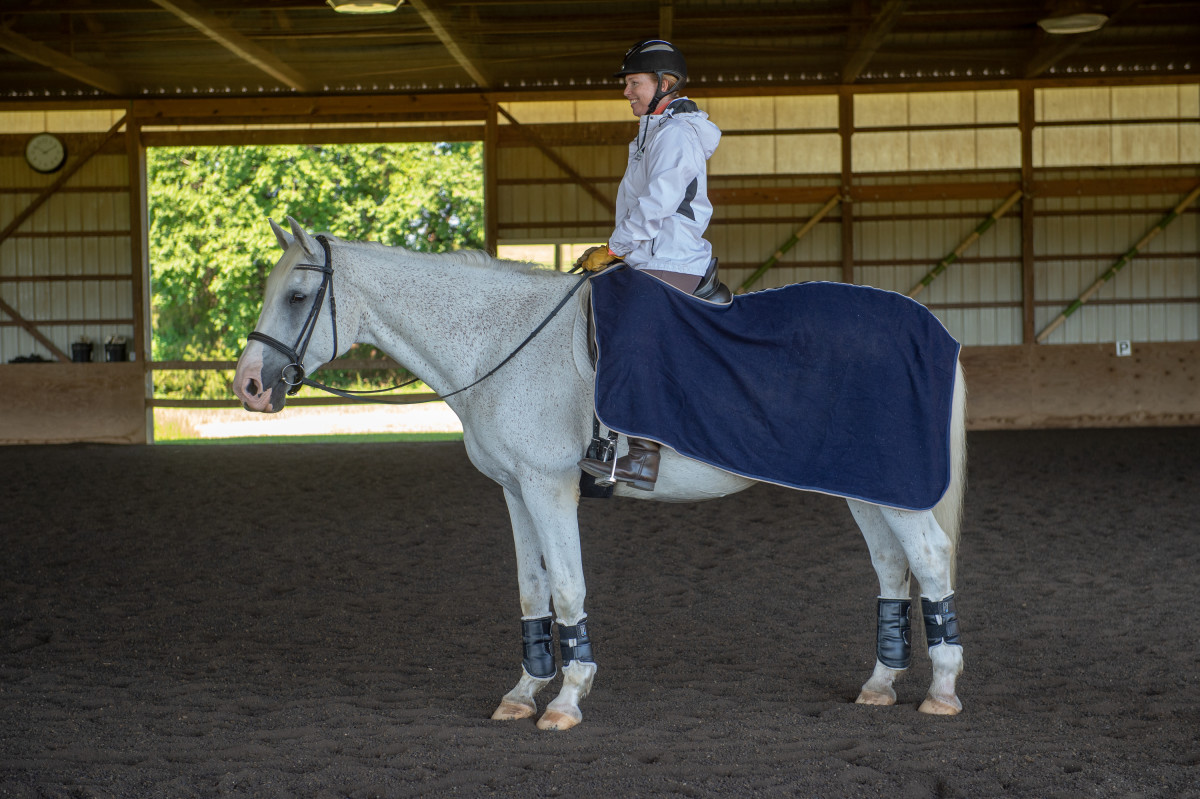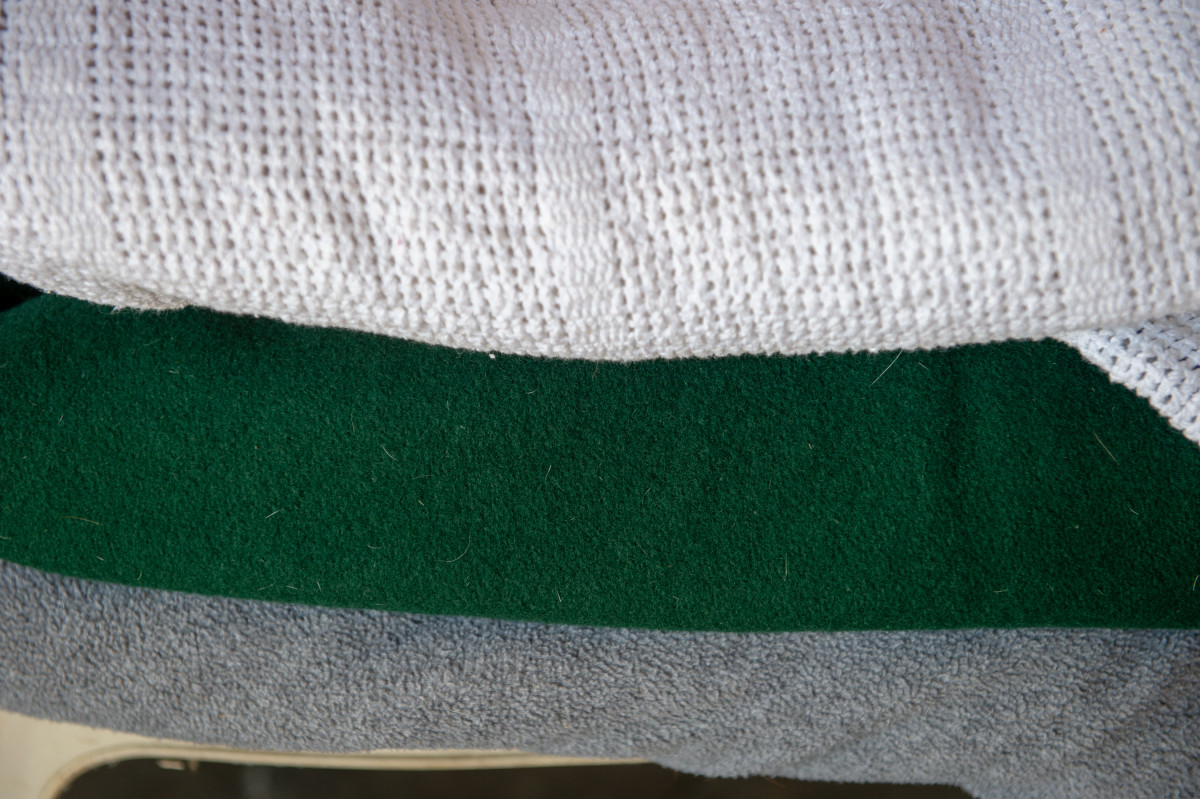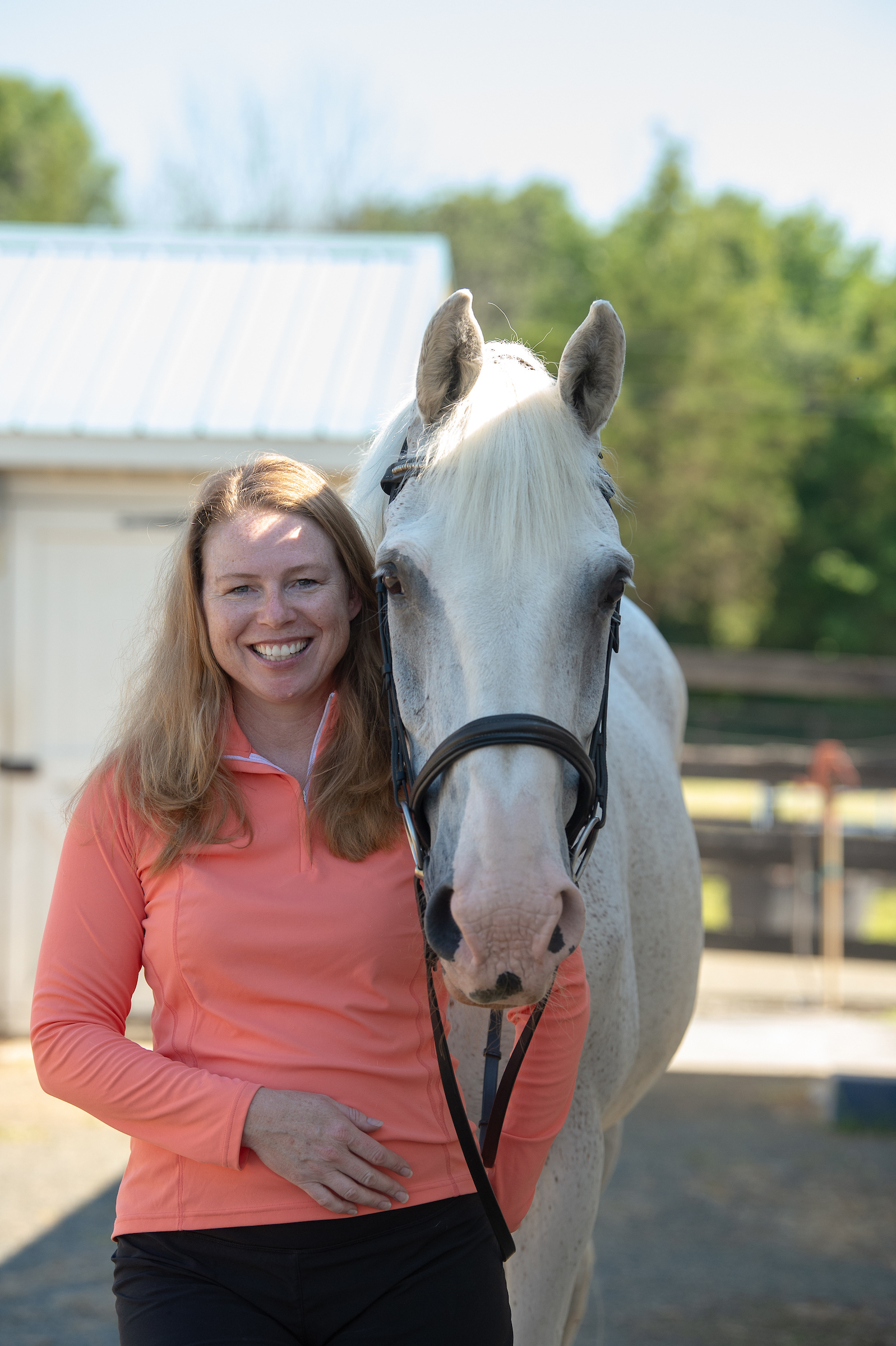One of the most versatile items in a horse’s wardrobe is a cooler: a sheet or blanket that both wicks moisture off a wet horse’s coat and traps heat against his body so that he doesn’t catch a chill while he dries. Coolers have many uses:

Amy K. Dragoo/AIMMEDIA
- Drying a horse who comes in from the pasture soaking wet from rain or snow on a cold day
- Keeping a clipped horse warm during grooming
- Keeping a clipped horse warm during warm-up
- Drying a sweaty horse in the wintertime as he cools off after a workout. This is especially helpful with unclipped horses, because their long coats get sweatier during rides and take much longer to dry afterward. Even if your horse is clipped, tossing a cooler on after a ride will keep him warm while his body temperature returns slowly and comfortably to normal.
Coolers now come in a range of good-quality materials. Wool is still the warmest and most absorbent and durable fabric on the market, but it’s generally more expensive than other fabrics—and it can’t be put in the dryer. Synthetic fabrics, such as fleece, have good wicking and insulating properties, are easier to wash and dry (without risking shrinkage), and are available in many different thicknesses and colors.

Amy K. Dragoo/AIMMEDIA
The traditional rectangular cooler reminds me of a bedspread: You drape it over your horse’s body; there may be a loop to attach in front of his ears, a loop for his tail, and ties to fasten it closed in front. Because of the rectangular shape, there’s a large swath of extra fabric that drapes over his neck and down towards his knees. Since these traditional coolers can be hard to keep in place, I instead recommend buying a more modern one, shaped to fit your horse, with buckles in the front and surcingles under the belly. Tailored neck pieces are also available. If the cooler you select has leg straps and/or a tail cord, make sure they’re properly fitted: loose enough to avoid rubs, but taut enough to do their job and prevent a hoof from getting stuck.
If you’re on a budget and can only afford one cooler, choose a thickness suitable for the coldest days your region experiences. For example, if you live in an extremely cold climate, pick a heavy wool or thick fleece cooler. On less chilly days, you can modify how you use the cooler by folding it in halves or thirds and draping it over just the sweaty parts of your horse.
Warmth During Grooming
During grooming, a cooler helps your horse stay comfortable, especially if the weather is cold and you have just removed his blanket. Place it on him as you would normally, but don’t fasten the buckles. Then fold it in sections (similar to the way you fold the cooler before removing it—see the photo gallery below) to expose one area of his body at a time. When you finish that area, turn the cooler over onto it and proceed to the next area.
Warmth While Drying Off
My rule of thumb is to use a cooler on clipped horses when the temperature is below about 60 degrees. This may vary somewhat depending on how wet your horse is and, if he’s outside, the weather conditions. If it’s sunny and calm and in the upper 50s, and he is just barely damp, you may not need a cooler. However, he may need one for the same temperature in cloudy, drizzly conditions.
Unless your cooler has leg straps (most don’t), keep your horse tied while he’s wearing it. If you let him loose in his stall or paddock, he can easily shift it out of place by rolling—or even just by moving around a lot—and trap or scare himself. Leave it on until his coat feels dry underneath. The cooler may be quite damp, but that means it did its job! With some coolers, you may even see water droplets beading on the outside of the fabric. Then remove it and blanket your horse as needed.
Layering
If your horse is extremely wet and/or it’s an especially cold day, layering a heavier cooler over a thinner, lightweight one can speed up the drying process. The heavy layer will keep your horse warm while the light layer soaks up the moisture. Be sure to check them frequently—I use a timer or alarm on my watch to remind me—and remove the bottom layer before it becomes saturated (so wet that you can wring water out of it). Then re-apply the heavy layer and leave it on until your horse’s coat is dry. When fitting a heavier layer over a lighter one, place the former slightly ahead of the latter, so there’s plenty of room between them across the chest, and the front edge of the top layer is in front of the bottom layer.


Liv Gude spent years in the saddle riding hunters, jumpers, reiners and, ultimately, dressage horses before switching her focus to growing her expertise as a professional groom. She started her grooming career with Olympian Guenter Seidel. Liv believes daily care, early detection of illness and lameness, and overall health and presentation are the first and foremost duties of a groom. After grooming for years, Liv saw the need to bring professional grooms and horse owners together in a supportive and educational manner. In 2011, she founded ProEquineGrooms.com, an online resource that provides information about grooming, employment and horse care.
For more grooming and health-care tips and to learn how Liv became a professional groom, listen to the Practical Horseman Podcast, Episode 19.
This article originally appeared in the Winter 2019 issue of Practical Horseman.










